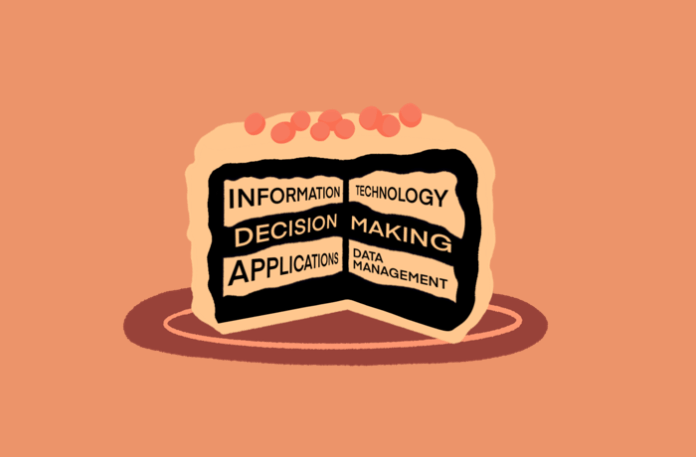During the winter holiday season, you may see a treat advertised that for many is an abomination, and for some is a confectionary panacea: the piecaken. For those not familiar, this is the seven-layer dip of desserts, where cake and pie are stacked into a single slice of taste and calorie explosion. This unique creation may also serve as a commentary on the evolving role of the Chief Information Officer.
Since its creation 40 years ago, the role of the Chief Information Officer (CIO) has often been that of the technology leader for the organization – the provider of platforms, software, and hardware to enable the business. Often, the information technology department’s primary role is to store data and provide the platform and applications to access it. Then that data is used by others to create information.
In January 2020, McKinsey Digital published an article entitled, “The CIO Challenge: Modern business needs a new kind of tech leader.” The argument is made that “for IT to become a driver of value, the transformative CIO also needs a new set of skills and capabilities that embody a more expansive role.” While this expansion of skills is critical, this viewpoint still focuses on the traditional role of the CIO as a technology leader and not as an information leader.
For IT to become a driver of value, the transformative CIO also needs a new set of skills and capabilities that embody a more expansive role.
McKinsey Digital, “The CIO challenge: Modern business needs a new kind of tech leader”
As we look ahead to the evolution of business and technology, the traditional one flavor “apple pie” CIO role is no longer enough. Cloud-based applications and service providers now often serve as the data manager, and technical support is outsourced. As a result, the role of CIO must focus on the convergence of data management and how it should fuse together to create and strategically apply information from a myriad of sources. Today’s Chief Information Officer must evolve to a broader “piecaken” multi-layered role focused on a key part of the title – information.
The September-October 2021 Harvard Business Review article “Future-proofing Your Organization” makes the case that “few companies or employees manage engagement with technology in a coordinated way, so employees become suspicious of it, and the technology underperforms management’s expectations.” Correcting this strategic incoherence between information, technology, and people should be the role of the CIO. It means having the skills to understand and address all three components: information and technology and people.
As the owner of information, the CIO must have a breadth of responsibilities that may be “non-traditional” – at minimum, CIOs must understand the use of information (not just data) across the entire enterprise. This means unpacking the sources of information (e.g., research, accountability, product development, marketing, finance, human resources, operations), then determining where information convergence is occurring for decision making and manipulation (e.g., customer service, operational teams, the executive cabinet, the Board room).
The “piecaken” CIO must also understand technology at the enterprise and user levels. The view must be grounded in the perspective of the customer, whether internal or external, coupled with the perspective of the organization. It means having strong business acumen, a customer service skillset, and the ability to critically assess technology tools and platforms and their application in solving the customer’s needs in a financially sound manner.
Lastly, this evolved CIO must be a valuable visionary leader for the organization providing strategic counsel to the CEO and Board. To do so, the CIO must sit at the junction of information creation and information usage, with a systems-level understanding of internal and external customer objectives, coupled with a strong understanding of organizational risk in various forms: reputational, regulatory, financial, strategic, political, and operational.

To become this new “piecaken” CIO – the Office of the CIO must become an office that collaborates closely, or directly converges, with other offices that have traditionally managed information. It may be especially true of communication, data, marketing, accountability, or research offices. Ultimately, the goal should be the achievement of business goals in a more coherent, effective, efficient, and market-competitive manner.
Within my own organization, the roles of IT and communication have converged within the Office of the CIO. This rare operational alignment has enabled the ability to flex to the challenges of the global pandemic more rapidly, including the crisis communication and the deployment of nearly $70 million in technology in less than six months. Reporting to the CEO has enabled real-time decision-making, especially in crisis response. It has also enabled a clearer understanding of customer needs, the political environment, and the use and application of information across the organization.
While the “piecaken” at the holidays may come and go, the acceleration and proliferation of information, and the need to harness it by a multi-layered CIO, will continue to last long after.






